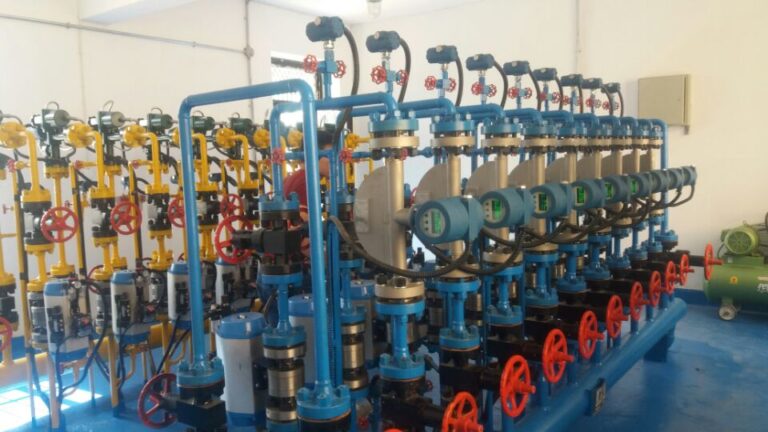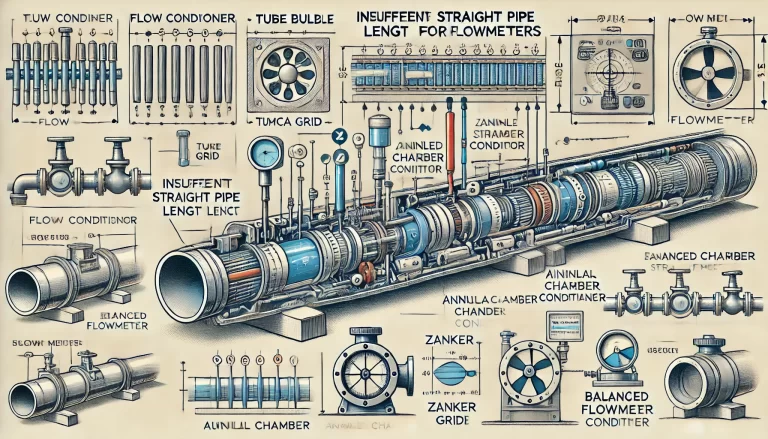Flowmeters often require a certain length of straight pipe (straight run) upstream and downstream to ensure accurate readings. However, in many practical installations, site conditions make it difficult or impossible to meet these requirements. So, what can you do in such situations? Below are detailed methods to address insufficient straight pipe length for flowmeters.

1. Install a Flow Conditioner
One of the most common solutions is to use a flow conditioner, also known as a flow straightener. These devices improve the flow profile of fluids, eliminating distortions caused by bends, valves, or other obstructions in the pipeline. According to ISO 5167 standards, flow conditioners can significantly reduce the required straight pipe length by improving flow uniformity near the flowmeter.
Types of Flow Conditioners:
Tube Bundle Flow Conditioner: Composed of multiple tubes, it eliminates radial velocity fluctuations and vortices.
AMCA Conditioner: Features a grid structure to correct velocity and pressure distribution effectively.
Zanker Flow Conditioner: Offers superior correction for asymmetrical velocity profiles but can introduce significant pressure loss.
Orifice-Type Conditioner: Enhances velocity profile uniformity and flow consistency, particularly suitable for improving flowmeter coefficients.
VIP (Vortab Insertion Panel): Specifically designed for high-precision thermal mass flowmeters to eliminate disturbances caused by bends and valves.
Installation Considerations:
Placement of the flow conditioner is critical for optimal performance. For instance, AMCA conditioners are sensitive to installation locations, while grid-based designs like orifice conditioners are less dependent on position.
Flow conditioners introduce additional pressure loss. For example:
Orifice conditioners: ~1.3 times the dynamic pressure.
AMCA conditioners: ~0.58 times the dynamic pressure.
Pros and Cons:
Pros: Improves measurement accuracy; reduces straight pipe length requirements.
Cons: Increases cost; potential maintenance issues such as clogging; adds pressure drop.

2. Modify the Pipeline
If feasible, consider modifying the pipeline to extend the straight pipe section. This can be done by consulting with equipment specialists to redesign or reposition existing components. While this solution is more resource-intensive, it ensures compliance with flowmeter requirements.
3. Adopt a Compromise Approach
In situations where neither flow conditioners nor pipeline modifications are practical, a compromise may be acceptable. If the flowmeter readings are only required for general monitoring or process control—not for billing or critical measurements—you can tolerate reduced accuracy within acceptable limits. This approach is cost-effective but requires careful documentation of the associated trade-offs.
4. Use Flow Coefficient Adjustment
Another method is to apply flow coefficient correction. This involves assembling a setup with the existing pipe configuration, calibrating the flowmeter with this specific setup, and determining a custom flow coefficient. This corrected coefficient is then used in calculations to account for inaccuracies caused by insufficient straight pipe length.
5. Select Flowmeters with Low Straight Pipe Requirements
Certain flowmeters are designed to operate with minimal straight pipe lengths. Here are two examples:
Annular Chamber Orifice (ACO): Features a “equalizing ring” design that reduces sensitivity to installation errors. It minimizes measurement errors and eliminates areas where condensate might accumulate. Compared to standard orifices, ACO performs better under high-flow conditions.
Balanced Flowmeter: A circular disk with multiple, precisely designed holes minimizes turbulence and vortices, ensuring near-ideal fluid flow. Advantages include:
Short straight pipe length requirements: 1–3D upstream, 0.5–1D downstream, and in some cases, less than 0.5D.
Faster pressure recovery compared to traditional devices, making it suitable for installations with space constraints.

Key Takeaways
The above solutions can effectively address issues related to insufficient straight pipe lengths for flowmeters. Here’s a quick summary:
Flow Conditioners: Versatile and effective but may cause pressure loss.
Pipeline Modification: A robust solution for long-term accuracy but costly and time-consuming.
Compromise Approach: Suitable for non-critical measurements.
Flow Coefficient Adjustment: Provides customized accuracy through calibration.
Specialized Flowmeters: Ideal for limited-space installations with low straight pipe requirements.
When implementing these solutions, always evaluate the specific application scenario, fluid properties, and operational constraints. Consulting with experts in flow measurement technology can help ensure the best outcome for your system.
Visual and Practical Enhancements
To make this content even more impactful:
Add Visuals: Include diagrams of flow conditioners, modified pipelines, and specialized flowmeters.
Provide Case Studies: Show real-world applications of these solutions.
Economic Analysis: Offer cost-benefit comparisons for each method.
By following these guidelines, you can optimize your flowmeter installations for accuracy and reliability even in challenging conditions.
